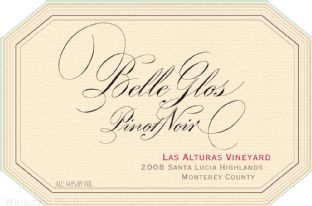Sign In Chef

By using our free meal planner (and the rest of spoonacular.com) you have to agree that you and only you are responsible for anything that happens to you because of something you have read on this site or have bought/cooked/eaten because of this site. After all, the only person who controls what you put in your mouth is you, right?
Spoonacular is a recipe search engine that sources recipes from across the web. We do our best to find recipes suitable for many diets — whether vegetarian, vegan, gluten free, dairy free, etc. — but we cannot guarantee that a recipe's ingredients are safe for your diet. Always read ingredient lists from the original source (follow the link from the "Instructions" field) in case an ingredient has been incorrectly extracted from the original source or has been labeled incorrectly in any way. Moreover, it is important that you always read the labels on every product you buy to see if the product could cause an allergic reaction or if it conflicts with your personal or religious beliefs. If you are still not sure after reading the label, contact the manufacturer.
We also attempt to estimate the cost and calculate the nutritional information for the recipes found on our site. Again, we cannot guarantee the accuracy of this information. Additionally, our nutrition visualizer that suggests that you limit sodium, sugar, etc., and get enough protein, vitamins, and minerals is not intended as medical advice. Similarly, our health tips are based on articles we have read from various sources across the web, and are not based on any medical training. The team behind spoonacular does not possess any medical qualifications and the information may be found to be incorrect or out of date based on future research. If you need help planning your diet or determining which foods (and recipes) are safe for you, contact a registered dietitian, allergist, or another medical professional.
Spoonacular is not responsible for any adverse effects or damages that occur because of your use of the website or any information it provides (e.g. after cooking/consuming a recipe on spoonacular.com or on any of the sites we link to, after reading information from articles or shared via social media, etc.)
× Image © Pink When
Image © Pink When
$6.87 per serving

1 likes

Ready in 18 minutes

Spoonacular Score: 93%
Delicious Pan Fried Trout might be a good recipe to expand your main course recipe box. This recipe makes 4 servings with 639 calories, 58g of protein, and 34g of fat each. For $6.87 per serving, this recipe covers 44% of your daily requirements of vitamins and minerals. This recipe from Pink When requires pepper flakes, dijon mustard, kosher salt, and garlic. 1 person has made this recipe and would make it again. It is a good option if you're following a dairy free and pescatarian diet. From preparation to the plate, this recipe takes around 18 minutes. With a spoonacular score of 87%, this dish is awesome. Users who liked this recipe also liked Pan-Fried Trout, Pan-Fried Trout, and Pan-Fried Trout.
Pinot Noir, Pinot Grigio, and Gruener Veltliner are my top picks for Trout. Fish is as diverse as wine, so it's hard to pick wines that go with every fish. A crisp white wine, such as a pinot grigio or Grüner Veltliner, will suit any delicately flavored white fish. Meaty, strongly flavored fish such as salmon and tuna can even handle a light red wine, such as a pinot noir. The Belle Glos Las Alturas Vineyard Pinot Noir with a 4.6 out of 5 star rating seems like a good match. It costs about 35 dollars per bottle.
 Located in one of the highest-plantable sites in the Santa Lucia Highlands of Monterey County, this pristine bench offers the Las Alturas Vineyard cool, coastal days with consistent sunshine and a foundation of Gloria sandy loam soil.When planting this 15-acre vineyard, we matched various Pinot Noir clones to individual slopes and soil attributes of the land. Our yields are deliberately kept low in order to preserve the fruit intensity these clonal choices have given us.Very dark burgundy; aromas of black cherry and tilled earth are abundant and a delight for the senses. The palette is full, chewy and rich. It coats the mouth with flavors of berry pie filling, sweet spices, and plum, all encased by a complex textural structure that leads to an elegantly supple finish that calls for another sip.
Located in one of the highest-plantable sites in the Santa Lucia Highlands of Monterey County, this pristine bench offers the Las Alturas Vineyard cool, coastal days with consistent sunshine and a foundation of Gloria sandy loam soil.When planting this 15-acre vineyard, we matched various Pinot Noir clones to individual slopes and soil attributes of the land. Our yields are deliberately kept low in order to preserve the fruit intensity these clonal choices have given us.Very dark burgundy; aromas of black cherry and tilled earth are abundant and a delight for the senses. The palette is full, chewy and rich. It coats the mouth with flavors of berry pie filling, sweet spices, and plum, all encased by a complex textural structure that leads to an elegantly supple finish that calls for another sip.
» Get this wine on Wine.com


























Read the detailed instructions on Pink When